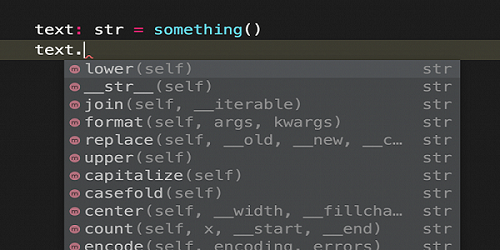The future is becoming more digitized. Info is the king! As we continue digitization, we’ll gradually shift towards an age of gigabytes of information. Later to an age of exabytes and yottabytes, and then again petabytes and much more. Our world will be increasingly automate, where we will be able to exploit huge quantities of all kinds of info. As a result of this, artificial intelligence (AI), Machine Learning (ML), and Python would have a much greater effect on topics like healthcare. We all are aware that Python is an animated typo language creating to be simple and effortless entertaining for starters. The reason for this fun is that there are no compulsions on data types. Yet, Strict Type Hinting has its advantages.
What’s the huge thing with strongly typewritten languages? In a summary, it implies that because there is no code compiling, the Programming language developer performs type testing while the software is running. As a consequence, parameter categories can be change at any time during the app. It’s generally quicker to compose new code in a powerfully composed language like Python; since you don’t need to work out all the sort of revelations by hand. Yet, when your codebase begins to get huge, you’ll run into loads of runtime bugs that static composing would have forestalled.
Advantages of Statically-Typed Languages
- The best code achievement.
- Improved performance when it comes to typing restraints that provide additional prospects for assembling optimizations.
- With each step of your coding, you could have the help of the IDE as well as supporting documents inside. Using such protocol, you can accomplish a reduction in the probability of trying to make inaccurate statements.
- It is easy to determine objects. Unlike conventional source code, when you deal with classes in IDE, users could even simply slide from one class to another along with the IDE in place; and no need to understand anything at all regarding the folder scope of the system. Alternatively, if a code course or structure description is present in your source code; you could even quickly locate it by switching to the API View. Once found, it will be instantly highlighted automatically in one’s script as users edit. As a way to help the new learners, programmers are implementing static typing.
- The statically typed languages find things simpler to operate with multidimensional databases as well as additional structures; such as Windows machines that as well depend on static typing.
- It allows users to draw-type conflicts earlier during predefined intervals.
- Your product can decrease the possibility of certain sources of mistake. Consider the more complex instance; in strongly typed languages (JavaScript, Perl, and so on), when you’re not cautious to cleaning input validation; one could even probably wind up doing odd things such as (for instance) hoping to update a quantity like “8” and they might get 108 rather than hoping to get 18 as a number.
Reasons behind usage of Python
The reasons why developers like to use Python is due to being very programmer-friendly with very low barriers to entry; and having many features that will make your development life easier. Python’s normal word, lexical sucrose, and simplicity of teaching have been the most features; trying to capture 40 percent of participants who’d been ask whether the best attributes they enjoyed a lot is. Like the Python Development Services provider questionnaire, designers have surveyed throughout the fall of 2020. While Python (35 percent) and C# (21 percent) have topped the list, the two languages with both the highest ratings in this survey.
Takeaway
Key developers of such technological advances are working hard to move the future forward with the support of computer languages. This is why languages like R as well as Python are so important; since they greatly help in information retrieval as do additional languages as well. The very normal and standard-issue that many developers face regarding the variables in Python language is Animatedly Typed.







